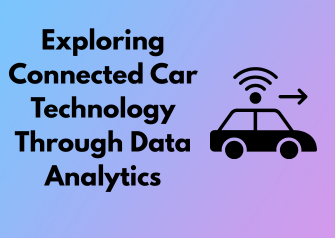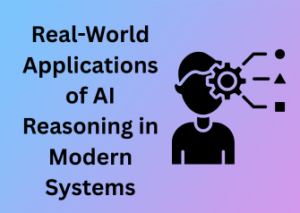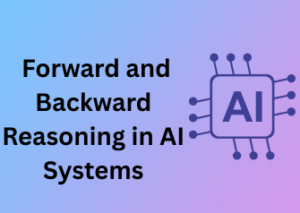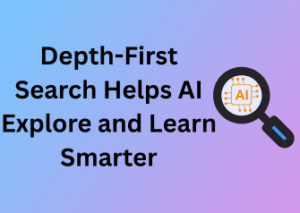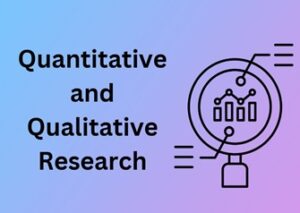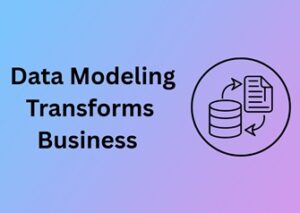Let’s take a moment to appreciate just how far cars have come in the past couple of decades. Remember when cars were just about getting from Point A to Point B? Those days are long gone. Today, cars are not simply machines on wheels—they’re high-tech companions, constantly evolving to become smarter, safer, and more efficient. But how is that even possible? Let’s pull back the curtain to explore what’s behind the growing intelligence of modern vehicles.
How Are Cars Becoming More Intelligent?

The secret lies in connected car technology. Does that term sound futuristic? Well, it is, but it’s also already here, integrating complex technologies to make driving easier and more intuitive. Put simply, a “connected car” is a vehicle equipped with internet access, advanced computing systems, and the ability to communicate with other devices, like your smartphone or other vehicles on the road. It’s a mix of engineering brilliance and data-driven innovation!
Driving Smarts Powered by Data
At the heart of this transformation lies data. Yes, data is what fuels the intelligence of modern cars. From monitoring speed and fuel efficiency to detecting nearby objects or adjusting routes on the go, cars collect and process massive amounts of information. But what makes all this possible? Two things:
- Advanced algorithms: These are at play behind the scenes, analyzing heaps of data and helping your car make quick, accurate decisions.
- Integrated technology: Sensors, cameras, and onboard computers work together to provide seamless communication both inside and outside the vehicle.
Why Should Drivers Care?
So, what’s in it for drivers like you and me? Plenty! Smarter cars bring with them a host of benefits:
- Enhanced safety: Features like collision warnings, blind-spot detection, and lane-keeping assistance make driving safer for everyone on the road.
- Better convenience: From self-parking systems to connected apps that remotely start your car, life just gets easier.
- Improved eco-friendliness: With smarter engines and optimized navigation, connected cars contribute to reduced emissions and fuel savings.
The Backbone of Data: Sensors and In-Vehicle Communications
Ever wondered how connected cars gather and process the immense amounts of data that power modern-day driving technology? At the heart of this technological marvel lie sensors and in-vehicle communication systems. These components work together like a symphony, ensuring that your car operates smarter, safer, and more efficiently. Let’s dive into this fascinating world and understand why they’re such crucial players in the connected car ecosystem!
What’s the Role of Sensors?
Sensors are, quite simply, the eyes and ears of connected vehicles. They collect raw data from the car’s surroundings and internal systems, which is then processed to deliver actionable insights. Here’s a quick lowdown on the major types of sensors:
- Lidar Sensors: These act as your car’s “vision,” using light detection and ranging technology to map out objects around it. Think of it as radar, but way more precise.
- GPS Sensors: They help with navigation by determining your car’s location, speed, and elevation—yes, your car knows exactly where you are at all times.
- Proximity Sensors: Want to avoid rear-ending someone in slow-moving traffic? These ultrasonic sensors are here to judge distances and prevent collisions.
- Engine and Component Sensors: Deep within, your car has oil pressure sensors, temperature detectors, and even brake monitoring devices to ensure everything is working seamlessly.
Collectively, these tiny, powerful devices gather mountains of data, enabling features like adaptive cruise control, automated parking, and in some cases, full-on self-driving.
The Magic of In-Vehicle Communication Systems
If sensors are the “data collectors,” in-vehicle communications are the “messengers” that carry this precious information to the car’s brain. Whether it’s a warning about tire pressure or a suggestion to take an alternate route, communication systems ensure the right data gets to the right place at the right time. But how does it all flow?
Let’s break it down:
- Controller Area Network (CAN) Bus: The CAN bus functions like a car’s nervous system, enabling different parts of the vehicle—say, the airbags, brakes, or infotainment screen—to “talk” to each other in real time.
- Ethernet Networks: Much like your home Wi-Fi router, automotive Ethernet networks transfer data quickly and efficiently, especially as cars become more data-heavy.
- Vehicle-to-Everything (V2X) Communications: Now, this is where things get exciting. V2X allows cars to communicate not only with other vehicles but also with infrastructure like traffic lights and pedestrians’ mobile devices. Welcome to the future of driving!
This seamless communication system ensures your car not only reacts to changes but does so intelligently—whether it’s rerouting for traffic or pre-loading maps and alerts for your next challenge.
Understanding Real-Time Data Streams in Connected Cars
Imagine cruising down the highway while your car intuitively adjusts the air conditioning, reroutes you around traffic jams, and keeps you updated on engine performance—all in real-time. That’s the magic of real-time data streams in connected cars. This game-changing feature is driven by a seamless symphony of advanced technologies, working together to provide instant information for both drivers and manufacturers. Let’s explore how these dynamic data flows operate and why they’re critical for the connected car revolution.
The Real-Time Data Magic: How Does It Work?
Real-time data streams are exactly what they sound like—continuous flows of information transmitted and processed as events unfold. Connected cars collect vast amounts of data from internal sensors (like GPS, accelerometers, and temperature monitors) and external sources (such as traffic or weather updates). Through a mechanism called *telematics*, this data is transmitted in milliseconds via cellular networks, Wi-Fi, or even satellite connections.
For instance, every time your car’s adaptive cruise control adjusts the speed based on the vehicle in front of you, it’s reading data from radar sensors, analyzing it instantly, and executing a response. Think of it like the nervous system of a car: sensors act as receptors, collecting inputs, and the car’s processor functions as the brain, interpreting this data for quick decision-making.
Applications of Real-Time Data in Connected Cars
So, what’s all this data being used for? Brace yourself, because the possibilities are both fascinating and practical:
- Traffic Management: Real-time data identifies traffic congestion or accidents ahead, prompting instant route adjustments. This not only saves time but also reduces stress for drivers.
- Enhanced Safety: Smart systems use this data to assist with blind-spot detection, lane-keeping, and automated emergency braking. In real-time, a vehicle can detect a potential collision and act faster than a human ever could.
- Energy Efficiency: Electric cars especially benefit from analyzing energy usage patterns, adjusting to optimize battery life and manage charging routes seamlessly.
- Driver Insights: Telematics data is often used to assess driving behavior, such as hard braking or aggressive turns, and share feedback that helps drivers improve their habits.
The Automotive “Hive Mind”
An exciting frontier of real-time data lies in *vehicle-to-everything* (V2X) communication. This technology allows cars to “talk” to each other, sharing instant updates about conditions, like icy roads or sudden slowdowns. Essentially, connected cars are creating a collaborative “hive mind” on the road. This not only has the potential to make driving smoother but also reduces accidents by keeping every vehicle in sync with its environment.
Challenges in Real-Time Data Processing
Despite its immense potential, creating functional real-time data streams isn’t without hurdles. The sheer volume of data pouring in every second requires robust software infrastructure for processing, filtering, and analyzing it effectively. Additionally, network latency can sometimes disrupt seamless communication, leading to delays in vital decisions. Automakers are fighting these challenges by leveraging 5G connectivity and edge computing, bringing processing closer to the source of data.
The Role of Cloud Integration in Analyzing Automotive Data
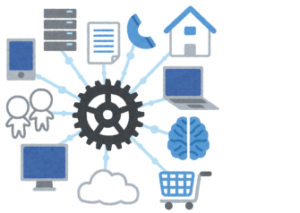
Welcome to the exciting world of connected cars, where technology meets the highways! Have you ever wondered how your car’s navigation system updates in real time, or how manufacturers track vehicle performance remotely? The secret lies in cloud integration — a game-changing element in analyzing vast amounts of automotive data. Let’s dive into this topic and see why the cloud is the unsung hero behind connected car technology.
What Exactly Is Cloud Integration?
Picture this: every modern connected car is like an advanced computer on wheels, constantly gathering data from sensors, cameras, and in-vehicle systems. This data includes everything from engine performance and fuel consumption to navigation routes and driver behavior. However, raw data itself isn’t very useful unless it can be processed and analyzed efficiently. That’s where cloud integration comes in.
Cloud integration allows vehicles to securely send data to cloud servers for analysis. These servers use artificial intelligence (AI) and machine learning development services to design and deploy algorithms that make sense of the data. Once analyzed, the cloud sends valuable insights back to manufacturers, service providers, and even the drivers themselves to enhance the overall driving experience.
Why the Cloud is Essential for Connected Cars
You might be thinking, why can’t cars process data independently, right? Well, the sheer volume of data produced by today’s vehicles is staggering — we’re talking about terabytes per day! Cars alone don’t have the computational power to process such data quickly. Here’s where the cloud shines:
- Scalability: As more vehicles hit the road with connected capabilities, cloud services scale effortlessly to handle the rising data demands.
- Real-Time Processing: Whether it’s updating a map with live traffic information or identifying potential mechanical issues, the cloud processes data in near real-time, ensuring quick and relevant responses.
- Cost Efficiency: Instead of requiring expensive in-car hardware for computation, automakers rely on centralized cloud systems that reduce costs while maintaining high performance.
Practical Applications
So, what kinds of problems does the cloud solve in everyday vehicles? Here are some fascinating real-world examples:
- Enhanced Navigation: Cloud-based mapping services provide real-time updates on traffic, road closures, and even parking availability — helping drivers save time and avoid headaches.
- Remote Diagnostics: Got a check engine light? Connected cars can send diagnostic codes to the cloud, which analyzes the issue. Drivers can then receive a notification directly on their app telling them what’s wrong, and which service center can fix it.
- Over-the-Air (OTA) Updates: No more trips to the dealership for software upgrades! Cloud integration enables your car to download and install the latest software patches and feature updates automatically.
Challenges of Cloud in Automotive Data
While the cloud is transformative, it’s not without its hurdles. Data integration from various systems — especially when vehicles come from different manufacturers — remains a challenge. Standardization efforts are underway, but it’s a work in progress. Moreover, there’s always the question of data security, which requires automakers and tech providers to deploy robust encryption and cybersecurity measures.
From Predictive Maintenance to Personalized Driving Experiences
Hello there! Let’s dive into the incredible ways the data collected by connected cars is revolutionizing our daily driving experiences. The best part? We’re not just talking about cars of the future—this tech is already here!
Predictive Maintenance: When Your Car Talks to You
Imagine this: instead of your car breaking down unexpectedly in the middle of a road trip or during your morning commute, it proactively tells you when something needs fixing. That’s the beauty of predictive maintenance!
Thanks to advanced analytics and data-sharing capabilities in connected cars, your vehicle can collect and monitor data on engine performance, tire pressure, battery health, brake functions, and more. By analyzing this data in real-time, manufacturers and predictive algorithms can identify potential failures before they happen. For example:
- Are your brake pads wearing thin? The system can notify you to replace them.
- Is your battery showing signs of diminishing power? The car might suggest scheduling a replacement soon.
- Is tire pressure off? You’ll receive an alert before it turns into a safety hazard.
For drivers, this means fewer surprises and costly repairs. And for carmakers, it builds a reputation for reliability and forward-thinking technology. Win-win!
A Personalized Driving Experience Tailored to You
Connected cars don’t just make driving safer and more efficient—they’re also revolutionizing how enjoyable it can be. Here’s where personalization kicks in. Whether you’re someone who loves a perfectly adjusted seat or enjoys hearing your favorite playlists the moment the engine starts, connected cars are all about making your ride…well, yours.
Using driver data, connected cars can create highly personalized experiences, such as:
- Custom Climate Control: Your car learns you like it warm in the winter and cool in the summer and adjusts the temperature accordingly before you even step in.
- Entertainment on Demand: A long drive? Your car knows your music and podcast preferences and sets the soundscape to match your mood.
- Navigation Preferences: Do you prefer scenic routes to highways? The car remembers your choices and adjusts GPS recommendations to match your preferred driving style.
- Driver-Friendly Settings: Seat positions, mirror angles, and even speed settings can be personalized based on your earlier preferences.
What makes all this possible is the ability to synchronize data gathered from your car, device interactions, and even connected platforms like smart home assistants. Your car might even greet you with a friendly “Good morning!” as it recommends the quickest route to your first meeting of the day. Pretty cool, right?
Security and Privacy Concerns in the Data-Driven Auto World
As cars get smarter and more connected, they’re no longer just vehicles—they’re practically rolling computers, collecting, analyzing, and transmitting massive amounts of data. While this opens the door to incredible advancements in convenience and safety, it also raises some pretty serious concerns about security and privacy. Let’s break it all down and explore how the auto world is working to protect driver data and keep hackers at bay.
Why Security in Connected Cars Matters
Connected cars rely on a network of sensors, cloud computing, and communication systems to function efficiently. This means they’re constantly sending and receiving data—whether it’s navigation info, vehicle diagnostics, or even passenger preferences. Sounds amazing, right? But here’s the catch: if this data falls into the wrong hands, the consequences can be severe.
Hackers could exploit vulnerabilities by taking control of a vehicle’s functions, such as brakes and steering, or accessing sensitive personal data like driving habits and locations. Scary, isn’t it? That’s why automakers and tech companies have made cybersecurity a top priority to stay ahead of potential threats and protect drivers.
Privacy Concerns: Who Owns the Data?
When your car gathers data, have you ever wondered who owns it? Is it you, the automaker, or the tech company providing the software? This question is at the heart of the privacy debate for connected cars.
In many instances, automakers justify collecting data to improve services, offer better features, or create safer vehicles. While it’s great for enhancing your driving experience, issues arise when data is shared with third parties, such as advertisers or insurance companies, without your explicit consent. Let’s be honest—no one likes the idea of their private information being sold. Being upfront with users about how data is collected and used is crucial for building trust.
How Automakers Are Tackling Security and Privacy Challenges
- Encryption: One of the core ways to ensure data security is by encrypting it. Automakers are using advanced encryption protocols to secure communication between the vehicle and external systems.
- Regular Software Updates: Like your smartphone or computer, connected cars also depend on software updates to patch vulnerabilities and stay secure. Drivers should always keep their vehicles up to date.
- Two-Factor Authentication (2FA): Some cars now require an extra layer of authentication to access connected features, making it harder for unauthorized individuals to breach systems.
- Data Anonymization: Automakers are increasingly anonymizing data, stripping it of identifying details, so it can’t be easily traced back to individual drivers.
Future Innovations Shaped By Connected Car Analytics
Let’s buckle up for an exciting ride into the future of connected car technology! With rapid advancements in data analytics, the possibilities for innovation seem limitless. It’s not a question of “if” but “how” this technology will shape the way we drive, commute, and even perceive transportation. Here’s what’s on the horizon.
1. Autonomous Vehicles Pushing Boundaries
Connected car analytics is driving (pun intended!) the development of fully autonomous vehicles. Already, semi-autonomous functionalities like adaptive cruise control and lane-assist rely heavily on real-time data analysis from various sensors and external networks. But in the future, data analytics will be the brainpower behind advanced AI algorithms that allow vehicles to make complex decisions independently. Imagine your car dropping you at the office, parking itself, and being ready at your service when you’re done for the day. Sounds futuristic? Well, we’re not that far off!
2. Intelligent Traffic Management
One of the most exciting outcomes of connected car analytics involves smarter traffic systems. Thanks to continuous data sharing between vehicles and infrastructure (think traffic lights, GPS systems, and road sensors), we’ll move closer to real-time traffic management. This means fewer jams, faster routes, and much less frustration for commuters. Cities could even see a reduction in car-related emissions as fuel efficiency improves through reduced idling and optimized driving paths. The air—and our patience—will benefit!
3. Enhanced V2X Communications
V2X (Vehicle-to-Everything) communication is already becoming a buzzword. This technology enables cars to “talk” to each other and to elements like road infrastructure, pedestrians’ devices, and more. With enhanced data analytics, V2X communication will mature into a dynamic ecosystem where vehicles operate almost like a flock of birds, reacting seamlessly to each other and their surroundings. For instance, precise accident predictions could drastically reduce road fatalities, making driving safer for everyone.
4. Hyper-Personalized Driving Experiences
Wouldn’t it be amazing if your car adjusted seat positions, climate control, and even navigation preferences the moment you sat inside? Data analytics will allow cars to learn from your behavior, preferences, and routines, delivering personalized experiences tailored to each driver or passenger. It’s not just about comfort—it’s about creating a seamless journey that fits into your lifestyle.
5. Eco-Friendly Innovations
As sustainability becomes a global priority, connected car analytics will be integral to eco-friendly solutions. For example, data collected from electric vehicles (EVs) can assess battery performance, optimize charging networks, and improve energy storage technologies. Analytics will ensure EV owners get the most out of their battery cycles while supporting initiatives to reduce carbon footprints within the automotive industry. Driving greener has never looked so cool!
6. Augmented Reality (AR) and Driver Assistance
The rise of data-powered driver systems means augmented reality could become a standard feature in cars. Imagine following a holographic arrow that appears on your windshield, guiding you turn-by-turn to your destination. It’s technology that’s fun but also practical, offering enhanced situational awareness and making driving safer and more intuitive.

